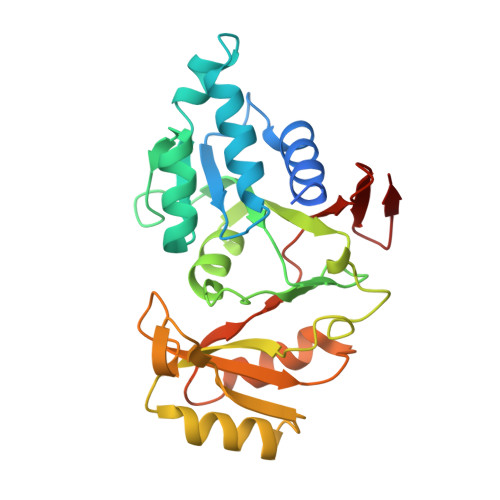Crystal structure of the S. cerevisiae D-ribose-5-phosphate isomerase: comparison with the archaeal and bacterial enzymes
Graille, M., Meyer, P., Leulliot, N., Sorel, I., Janin, J., Van Tilbeurgh, H., Quevillon-Cheruel, S.(2005) Biochimie 87: 763-769
- PubMed: 16054529
- DOI: https://doi.org/10.1016/j.biochi.2005.03.001
- Primary Citation of Related Structures:
1XTZ - PubMed Abstract:
Ribose-5-phosphate isomerase A has an important role in sugar metabolism by interconverting ribose-5-phosphate and ribulose-5-phosphate. This enzyme is ubiquitous and highly conserved among the three kingdoms of life. We have solved the 2.1 A resolution crystal structure of the Saccharomyces cerevisiae enzyme by molecular replacement. This protein adopts the same fold as its archaeal and bacterial orthologs with two alpha/beta domains tightly packed together. Mapping of conserved residues at the surface of the protein reveals strong invariability of the active site pocket, suggesting a common ligand binding mode and a similar catalytic mechanism. The yeast enzyme associates as a homotetramer similarly to the archaeal protein. The effect of an inactivating mutation (Arg189 to Lys) is discussed in view of the information brought by this structure.
Organizational Affiliation:
Institut de Biochimie et de Biophysique Moléculaire et Cellulaire, CNRS-UMR 8619, Université Paris-Sud, Bâtiment 430, 91405 Orsay, France.














